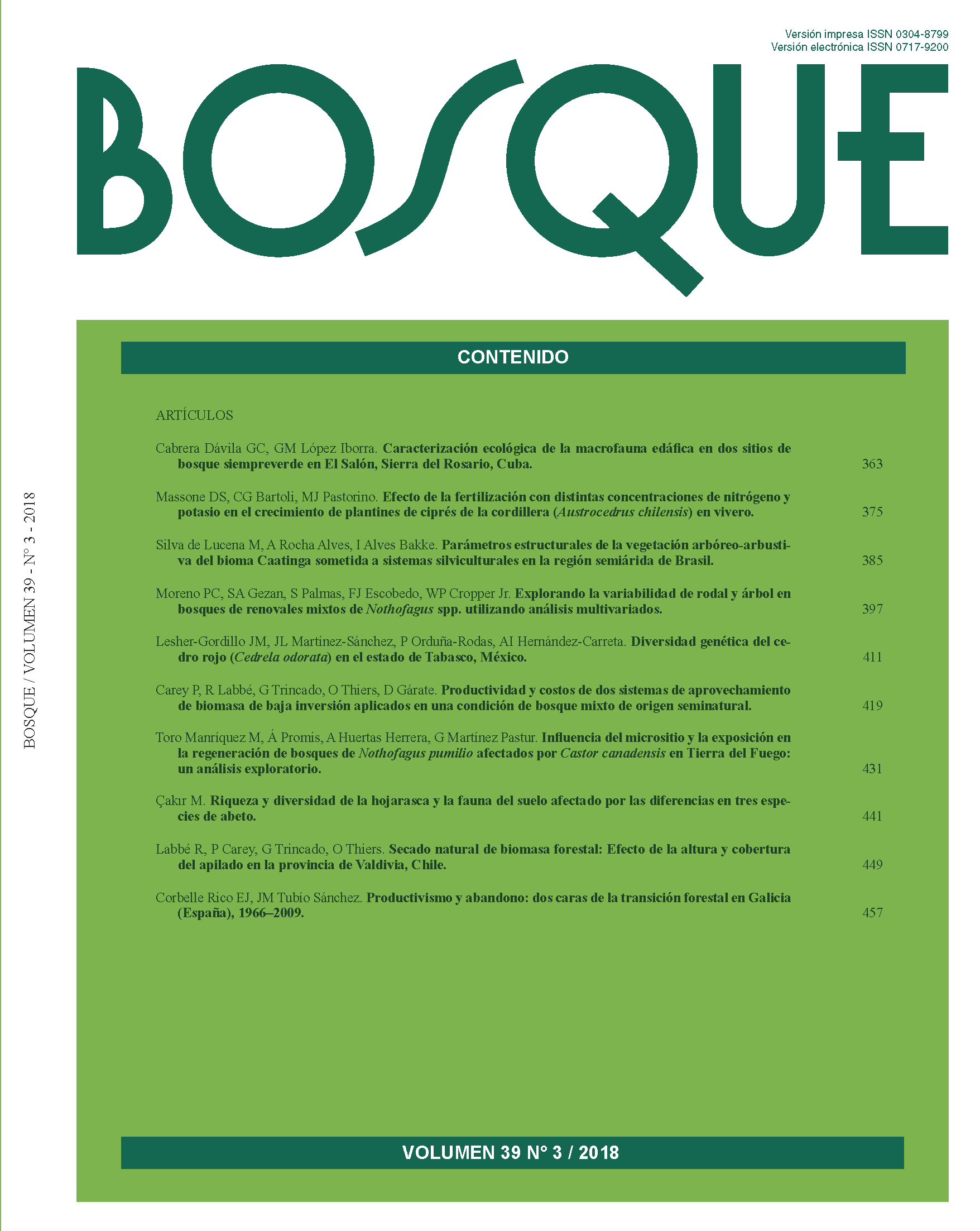Influence of microsites and exposure in tree regeneration of Nothofagus pumilio forests affected by Castor canadensis in Tierra del Fuego: An exploratory analysis
Main Article Content
Abstract
Microsites are determinant for seed germination and establishment of forest plants. In Tierra del Fuego, Nothofagus spp. affected by Castor canadensis (beaver) shows a restriction in the regeneration, affecting the natural dynamics of the forest. The objective was to determine the influence of different microsites and exposures, for tree regeneration of N. pumilio in an abandoned beaver dam. Two exposures (north-N and south- S) were considered in a forest area that was flooded by beaver action (BI), a forest area affected by cuts (BC) and an area of primary forest (BP) unaffected and contiguous to the previous areas. Ten microsites types were defined in the study area. BP, as a condition without alteration, presented five microsites, of which the highest plant density was litter (H) and bare soil (SD) (60-74 plants/m2 respectively). BC presented five microsites, with the superior establishment (15.9 plants/m2) on advanced decaying wood (MD-3). Contrary, in BI, the number of plants is lower (4.8 plants/m2) and it only occurs in edge wood (BT). Plant establishment was higher on S exposure, for all three-forest types due to greater shade. The 100 percent of the plant established in BI (microsite BT) were browsed by Lama guanicoe. It is suggested that the activities of restoration of abandoned beavers use plantations oriented to the most appropriate microsites. Likewise, the exclusion of L. guanicoe can accelerate the recovery of affected areas.

